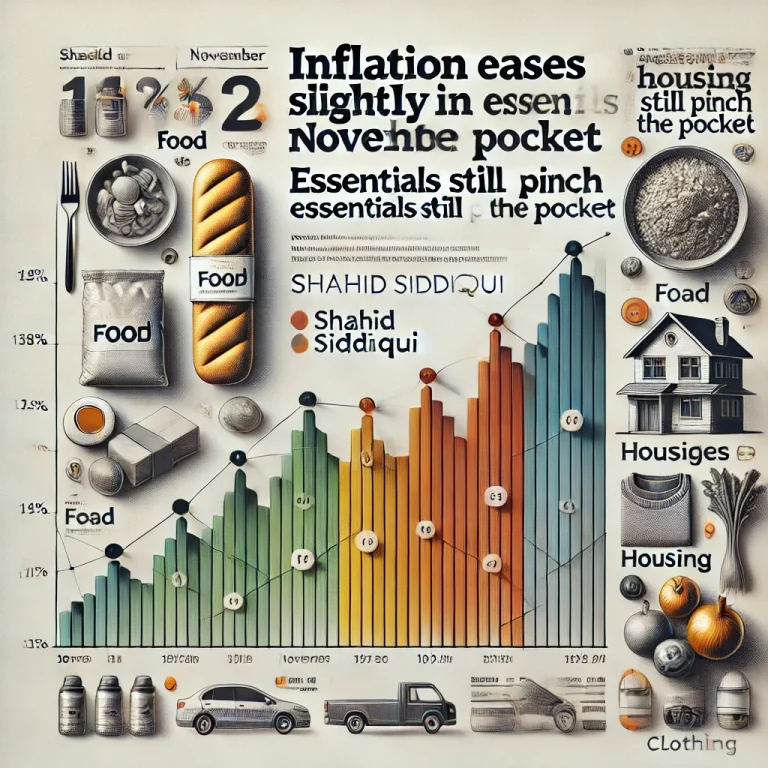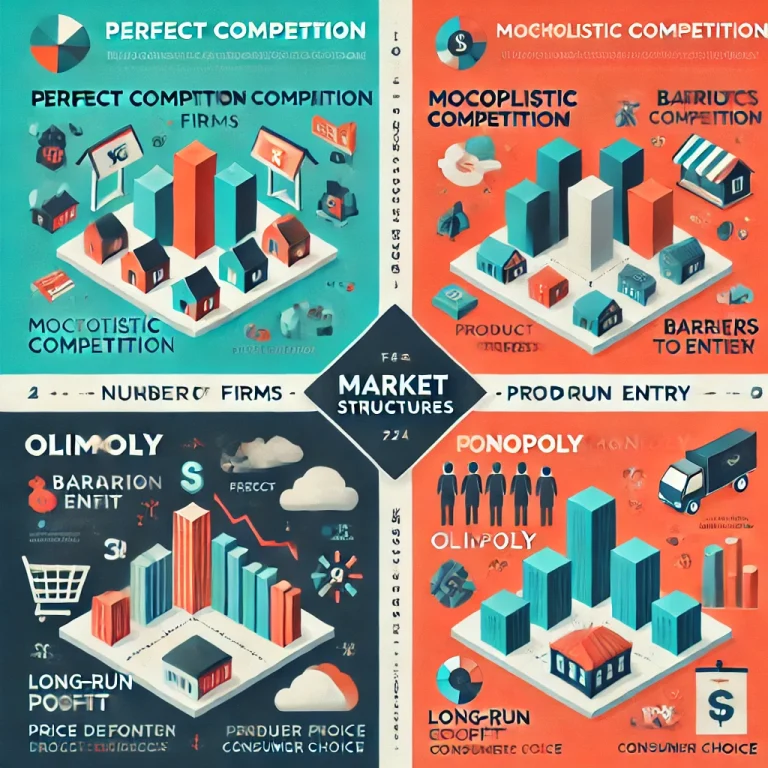Business Cycle in Economics
Introduction
The business cycle, also known as the economic cycle, refers to the periodic fluctuations in economic activity that an economy experiences over time. These cycles consist of alternating periods of economic expansion and contraction, influencing key macroeconomic variables such as GDP, employment, inflation, and industrial production. Understanding business cycles is crucial for policymakers, businesses, and investors as they navigate economic changes and make informed decisions.
Phases of the Business Cycle
The business cycle comprises four main phases: expansion, peak, contraction (recession), and trough. These phases collectively describe the rise and fall of economic activity.
1. Expansion
During the expansion phase, economic activity increases across various sectors, leading to overall economic growth. Key characteristics of this phase include:
- Rising GDP and industrial production
- Increasing consumer and business confidence
- Higher employment and declining unemployment rates
- Rising income levels and increased consumer spending
- Increased business investment and capital expenditure
- Moderate inflation as demand for goods and services rises
2. Peak
The peak marks the highest point of economic growth before a downturn begins. At this stage, the economy is operating at its maximum capacity. Key features of this phase include:
- Full employment or near-full employment
- Rising wages and disposable income
- High consumer and business confidence
- Increased inflationary pressures due to strong demand
- Possibility of asset bubbles forming in financial markets
3. Contraction (Recession)
A contraction, commonly referred to as a recession, occurs when economic activity starts to decline. This phase is characterized by:
- Decreasing GDP and industrial output
- Rising unemployment rates as businesses cut jobs
- Falling consumer and business confidence
- Reduction in investments and capital expenditure
- Declining inflation or potential deflation
- Reduced credit availability as financial institutions become more cautious
4. Trough
The trough represents the lowest point of economic activity in a business cycle. It signifies the end of a recession and the beginning of a recovery. Characteristics of this phase include:
- Stabilization of GDP decline
- Low levels of inflation or deflation
- High unemployment rates
- Reduced consumer and business spending
- Potential policy interventions such as lower interest rates and increased government spending to stimulate growth
Factors Influencing Business Cycles
Several internal and external factors influence the duration and intensity of business cycles, including:
1. Demand and Supply Shocks
Unexpected changes in demand or supply can significantly impact economic activity. For example, a surge in consumer demand can fuel expansion, while supply chain disruptions (such as oil shortages) can lead to economic downturns.
2. Monetary and Fiscal Policies
- Monetary Policy: Central banks influence the business cycle by adjusting interest rates and controlling money supply. Lower interest rates can stimulate economic growth, while higher rates can slow down an overheating economy.
- Fiscal Policy: Government spending and taxation policies play a crucial role in managing economic fluctuations. Increased public spending during recessions can boost demand, while higher taxes can slow down excessive growth.
3. Technological Innovations
Technological advancements can drive economic expansion by increasing productivity and efficiency. However, rapid changes can also lead to job displacement and temporary economic slowdowns.
4. Financial Market Dynamics
Booms and busts in financial markets can influence business cycles. For instance, stock market crashes or banking crises can trigger recessions, whereas strong financial markets can promote investment and growth.
5. Global Economic Conditions
Since economies are interconnected, global events such as trade wars, geopolitical conflicts, pandemics, or economic slowdowns in major economies can impact domestic business cycles.
Impact of Business Cycles on Different Sectors
Business cycles affect various sectors of the economy differently:
- Consumers: Changes in employment and income levels influence consumer spending patterns.
- Businesses: Companies adjust production, investment, and hiring decisions based on economic conditions.
- Investors: Stock and bond markets react to economic fluctuations, influencing investment strategies.
- Government: Policymakers implement measures such as stimulus packages or interest rate adjustments to stabilize the economy.
Measuring Business Cycles
Economists and policymakers track business cycles using various economic indicators, including:
- Gross Domestic Product (GDP): The most comprehensive measure of economic activity.
- Unemployment Rate: Indicates labor market conditions.
- Inflation Rate: Measures price stability and purchasing power.
- Consumer Confidence Index: Reflects consumer sentiment and future spending intentions.
- Manufacturing and Industrial Production: Provides insights into business activity levels.
Managing Business Cycles
Governments and central banks employ various strategies to mitigate the adverse effects of business cycles:
- Countercyclical Policies: Expansionary policies during recessions (e.g., lower interest rates, increased government spending) and contractionary policies during expansions (e.g., higher interest rates, reduced spending) help stabilize the economy.
- Automatic Stabilizers: Programs such as unemployment benefits and progressive taxation help cushion economic shocks without requiring direct government intervention.
- Investment in Long-Term Growth: Policies focusing on infrastructure, education, and technological advancements promote sustainable economic stability.
Conclusion
The business cycle is an integral aspect of economic dynamics, influencing growth, employment, and inflation. While economic fluctuations are inevitable, well-planned policy interventions and strategic business decisions can help mitigate risks and capitalize on opportunities. Understanding the business cycle allows governments, businesses, and individuals to make informed financial and economic choices, ultimately contributing to long-term economic stability and prosperity.

